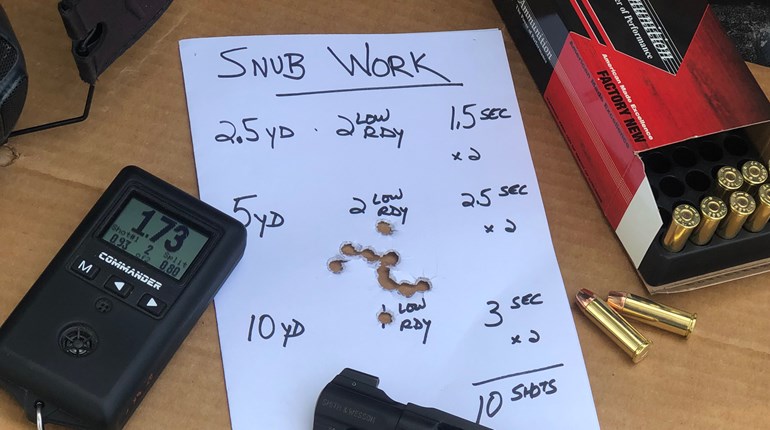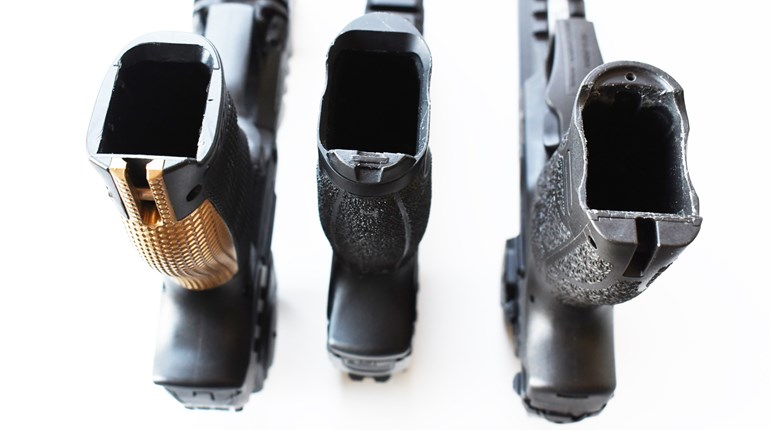
All day I’d shadowed the herd, waiting for the right opportunity to close in for a shot. There were about 40 cow elk in the herd and five bulls, each big enough to drop the string on, should one wander within range of my longbow. I began my day still-hunting along the petering-out ends of a series of ridges and into a three-month-old burn, where I found an unlikely herd of elk bugling their way through blackened tree trunks and brush stubble. I followed them out of the burn and into a lush canyon bottom where I ran out of cover. So I watched the elk climb a barren canyon wall and crest over into the next canyon, and I then ambled my way back to camp for a snack. Those elk would find a shady northeast-facing timber patch to bed in for the day, and I figured I could catch up with them mid-afternoon when they got hungry for their own snack. And that’s just what I did, zipping an arrow through a nice bull’s lungs at 23 yards as he worked his way around the fringes of the herd at dinnertime.

Closing to within bow or rifle range of big-game animals can offer a supreme challenge that requires its own set of specialized skills. I like to divide them into two categories: stalking and still-hunting. While stalking, you first spot your quarry, and then move in for a shot. When still-hunting, you sneak your way through likely habitat in search of a shot. Here are a few tips, tactics and techniques that will help you close the distance on a wily mule deer buck or a big, call-shy bull elk. You might even employ them on a pronghorn or whitetail, if conditions are right and you possess tons of patience.

Stalking
• Glass Up a Beast: The first element to a successful stalk is spotting your prey. We don’t have room enough in this article to cover the intricacies of spotting in detail, but in short; use the best glass you can afford, find a good vantage point and let your eyes do most of the walking. You can cover far more country, find more animals and contaminate less territory through glass than you ever will on foot. Once you’ve spotted, watched and read the body language of your quarry, you’re ready to begin your stalk.
• Plan Your Route: Before leaving your vantage point, study landmarks, choose a goal shooting position and plan your route to that position. It’s really easy to loose track of where the animal is, and where you are in relation to your goal position, once you leave your vantage point. Plan carefully, and use landmarks to guide your way.

• Stay Under Cover: While executing your stalk, try to stay completely out of sight of your quarry. Land mass offers the best cover; utilize hills, rocky outcroppings, ravines and other terrain to shield you from sight. Vegetation is second best; use heavy brush, tree lines and waist-high grass to block your prey’s vision while you close the distance. If you run out of land mass and vegetative cover, you can make like a wisp of smoke and move closer using environmental changes such as drifting cloud shadows, fluctuating winds and natural distractions like other animal movement that draws your quarry’s attention.
• Use a Decoy: In certain circumstances, such as stalking pronghorn across short-grass prairie, a decoy can render an otherwise impossible stalk very doable. I’ve used a folding cow (of the moo variety) decoy to close within pronghorn under those very conditions. I’ve also used folding elk decoys with good success while bowhunting elk, and I’ve hid behind my saddle horse and closed the distance on elk when hunting in mustang country, where the elk are used to seeing horses. The key is to blend in, seem like part of your quarry’s daily surroundings, and move like a cow, elk or horse, rather than like a hunter hiding behind a decoy.

• Play the Wind: Always, always, keep your wind (or scent) from reaching the animal you’re trying to stalk, particularly when you’re bowhunting. If they catch your wind, the game is over. So circle that extra mile, climb that extra ridge or wait that extra hour to make sure the wind is in your favor. Speaking of wind and extra hours, often the best time of day to put a stalk on an animal—especially in high-elevation mule deer or sheep country—is after the morning thermals have performed their capricious dance and everything has settled down for the day. Wait and watch until the wind has steadied and the animal has gotten up from its first bed, grabbed a quick snack and relocated to a shady position. Now the wind and your prey are likely to stay put for a few hours, giving you an honest chance to close within archery range.
• Be Aggressive: I’ve often watched novice hunters begin a stalk with the utmost care; moving slowly and stepping quietly while the animal they’re stalking is still a mile or more away. That’s silly. Your first task when stalking from long distance is to close that distance as rapidly as possible. If you don’t, that animal will likely be gone when you get there. So get out of sight, and then close in aggressively. Once you’ve closed within a couple hundred yards, then it’s time to slow down and stalk carefully.
• Be Patient: It’s been said that a hunter’s biggest attribute is patience. I agree. Once you’ve closed to within earshot of your prey, it’s time to slow down, become part of the environment and drift closer for a shot. Pay critical attention to cloud movement and shadows, wind gusts and air movement, and other factors that can conceal or reveal your presence. Blend in, move in concert with nature and relax: Prey animals can feel a predator’s intent, so don’t study them with a hard gaze, and don’t covet those backstraps sizzling on your evening campfire just yet. Just stay calm, work your way into position and make a steady shot. Then you can celebrate.

Still-Hunting
• Hunt Wildlife-Rich Areas: When still-hunting, you try to slip into an animal’s habitat, spot them before they’re aware of your presence and make a shot. Obviously, you must hunt where game likes to hang out. Use pre-season scouting, your knowledge of the area and the species, and current wind direction to decide to where to still-hunt that day.
• Use the Wind: The best still-hunting days are windy. Everything in the outdoors is noisy and moving on a windy day, meaning you can move and make noise too, with less likelihood of being discovered. Your ideal strategy is to still-hunt in an upwind direction, but hunting crosswind will work just fine, too. Try to move with the wind gusts and blend in with your surroundings.

• Stay in the Shadows: Direct sunlight makes you stand out like the proverbial sore thumb, no matter how good your camouflage. Do your best to keep to the shadows, especially when you stop to look and glass.
• One Step, Two Looks: The biggest challenge when still-hunting is to see your prey before it sees you, so here’s how you move: take one step, then take two long looks. Study the area in front and to the sides of you intently for any motion, anything that stands out or anything out of place. What you see might be the curving line of an antler, the texture of deer hair or the flicker of an ear. Search as far away as you can see, but study everything close-in as well; while still-hunting, it’s not unusual to close within a few yards of an animal before either of you is aware of the other’s presence.
• Use Binoculars: While on the subject of looking, always carry a binocular and use it. You can study surrounding brush and vegetation using your binos like a microscope. Here’s how: Look deep into the tangle with your bino, and turn the focus knob until the area you’re looking at becomes sharp. Study that region for a moment, then turn the knob a little to focus closer or further out—it’ll highlight an entirely different section of habitat. Take your time and pick the area apart piece by piece.

• Don’t Hurry: Still-hunting is not a speed game. Rather, you might take an hour to cover 40 yards, or an entire afternoon to hunt through a three-acre patch of woods. But if you’ve got a good idea those 40 yards or three acres holds game, what better way to spend an hour, or an afternoon?
• Still-Hunt When it’s Damp: Everything gets quiet in the woods when it’s damp, or wet from a recent rain. That makes for good sneaking conditions; sticks are less likely to snap underfoot, leaves don’t crunch like cornflakes and your movement is muted. It’s a good time to be in the woods.
• Deer Walking: We don’t always get to hunt in windy, damp or quiet conditions. Sometimes it’s simply impossible to move without making noise. When that happens, just make like one of the locals; imitate the natural sounds game make while moving. One of my favorite techniques is what noted traditional hunter and archer Fred Asbell calls “deer walking.” To deer-walk, simply imitate the one-two, one-two, one-two cadence of a four-footed beast by first stepping your heel on the ground, then a split-second later snapping down the ball of your foot, to create that one-two cadence. (You can reverse this if it’s more comfortable, using a first-ball-then-heel approach.) Take a few steps, hesitate, look for game, and then move ahead a few more steps, trying to imitate a deer’s movement pattern. Try it sometime; you’ll be surprised at how well it works.

• Stay Ready: Shot opportunities can happen very fast when still-hunting, so stay on your toes. Often you’ll see your quarry just a split second before he sees you. Just stay calm, make the shot and then celebrate having successfully implemented one of hunting’s most skill-demanding techniques.




































